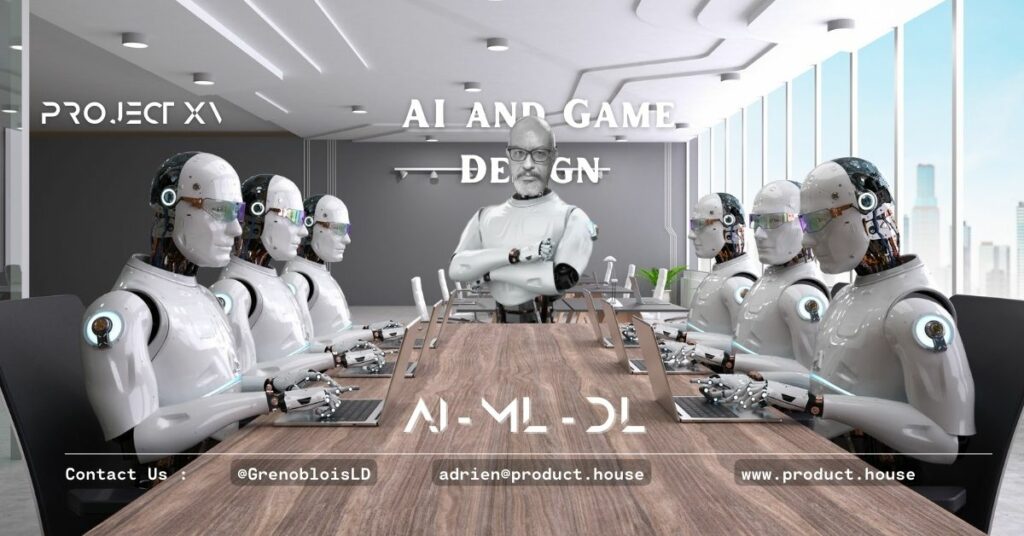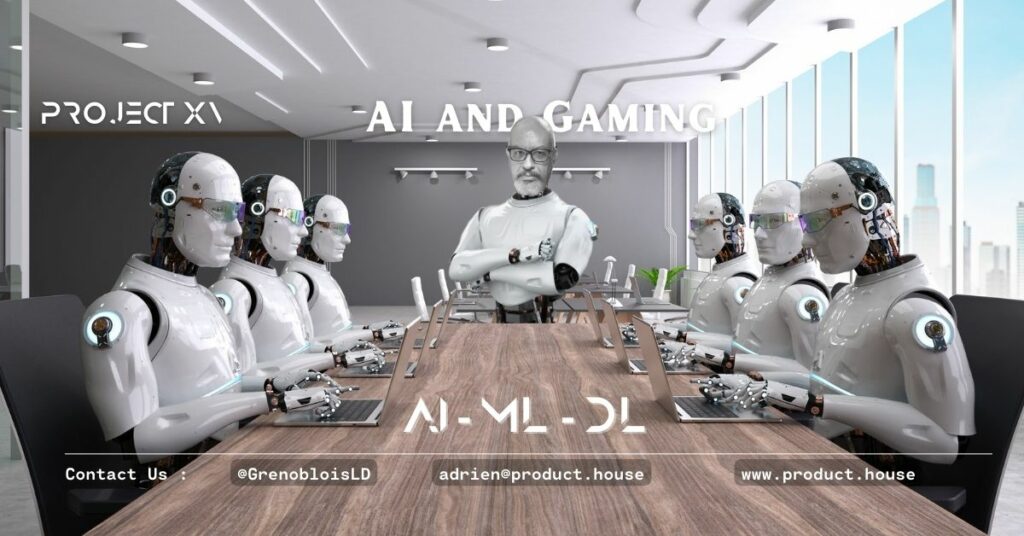AI and Game Design: Creating Better Games with Machine Learning

Artificial intelligence (AI) is becoming increasingly important in game design. By using machine learning and other AI technologies, game developers can create games that are more engaging, more immersive, and more fun to play. In this article, we will explore some of the ways in which AI is being used in game design.
AI in Gameplay
AI can be used to create more engaging and challenging gameplay. By analyzing player behavior and preferences, developers can create games that are more personalized and tailored to the player’s interests. AI can also be used to create more realistic and dynamic opponents, which can make the gameplay more immersive and exciting.
AI in Procedural Content Generation
Procedural content generation is the process of using algorithms to generate game content, such as levels, maps, and environments. AI can be used to create more varied and interesting content, which can help to keep the game fresh and exciting. Procedural content generation can also be used to create games that take up less storage space.
AI in Game Balancing
Game balancing is the process of ensuring that a game is challenging and balanced for all players. AI can be used to analyze player behavior and performance, and to adjust the difficulty level of the game accordingly. This can make the game more enjoyable for players of all skill levels.
AI in Player Behavior Analysis
AI can be used to analyze player behavior and preferences, and to create games that are more engaging and personalized. By analyzing a player’s gameplay data, developers can determine which types of games, levels, or items are most popular, and then create more of these. This can create a more immersive and enjoyable experience for the player.
AI in Bug Fixing
AI can be used to identify and fix bugs in games. By analyzing game data, AI algorithms can identify patterns and anomalies that indicate the presence of bugs. This can help developers to identify and fix bugs more quickly and efficiently.
FAQs:
Q: What is AI in game design?
A: AI in game design refers to the use of artificial intelligence to create better games.
Q: How is AI used in gameplay?
A: AI can be used to create more engaging and challenging gameplay, by analyzing player behavior and preferences and creating games that are more personalized and tailored to the player’s interests.
Q: What is procedural content generation?
A: Procedural content generation is the process of using algorithms to generate game content, such as levels, maps, and environments.
Q: How is AI used in game balancing?
A: AI can be used to analyze player behavior and performance, and to adjust the difficulty level of the game accordingly.
Q: What is player behavior analysis?
A: Player behavior analysis is the process of analyzing player behavior and preferences to create more engaging and personalized games.
Q: How is AI used in bug fixing?
A: AI can be used to identify and fix bugs in games by analyzing game data to identify patterns and anomalies that indicate the presence of bugs.
Q: Who are some experts in the field of AI in game design?
A: Some experts in the field of AI in game design include Michael Mateas, Gillian Smith, and Sebastian Risi.
Q: What are some potential case studies of AI in game design? A: Some potential case studies of AI in game design include the use of AI in the enemy behavior of “Halo,” the use of AI in game balancing for “Overwatch,” and the use of AI in the narrative structure of “SOMA.”
Q: How can AI be used to create more immersive and realistic game environments? A: AI can be used to create more realistic and dynamic environments by analyzing game data and creating more realistic lighting, shadows, textures, and 3D models.
Q: How can AI be used to improve player engagement? A: AI can be used to create more engaging and personalized games by analyzing player behavior and preferences and creating games that are tailored to the player’s interests.
Q: How can AI be used to create more efficient and cost-effective game development? A: AI can be used to automate certain aspects of game development, such as bug fixing and content generation, which can make game development more efficient and cost-effective.
Q: What are some benefits of using AI in game design? A: Some benefits of using AI in game design include more engaging and immersive gameplay, more personalized and tailored games, more varied and interesting content, more efficient and cost-effective game development, and more realistic and dynamic game environments.
List of Resources:
- Gamasutra (https://www.gamasutra.com/)
- AI Game Dev (https://aigamedev.com/)
- The AI Games (https://theaigames.com/)
- AI and Games (https://aiandgames.com/)
- Game AI Pro (http://www.gameaipro.com/)
List of Books:
- Artificial Intelligence for Games by Ian Millington
- Game AI Pro 2: Collected Wisdom of Game AI Professionals edited by Steven Rabin
- Behavioral Mathematics for Game AI by Dave Mark
- Game Programming Gems 8 edited by Adam Lake
List of Relevant Experts:
- Michael Mateas (https://twitter.com/mateas)
- Gillian Smith (https://twitter.com/gillianmsmith)
- Sebastian Risi (https://twitter.com/seb_risi)
- Jürgen Schmidhuber (https://twitter.com/SchmidhuberAI)
- Risto Miikkulainen (https://twitter.com/RMiikkulainen)
List of Potential Case Studies:
- “Halo” – AI in enemy behavior
- “Overwatch” – AI in game balancing
- “SOMA” – AI in narrative structure
- “No Man’s Sky” – Procedural content generation
- “Dragon Age: Inquisition” – AI in tactical gameplay
List of Examples of Use:
- More challenging opponents that adapt to the player’s behavior
- More personalized and tailored games
- More varied and interesting game content
- More efficient and cost-effective game development
- More realistic and dynamic game environments
Glossary:
- Artificial intelligence (AI): The simulation of human intelligence processes by machines, especially computer systems.
- Procedural content generation: The process of creating game content, such as levels and environments, using algorithms.
- Game balancing: The process of ensuring that a game is challenging and balanced for all players.
- Bug fixing: The process of identifying and fixing errors in a game.
- Physics engine: A software component that simulates physical systems in a game.
- Machine learning: A subset of AI that involves the
- creation of algorithms that can learn from and make predictions on data.
- Neural network: A type of machine learning algorithm that is modeled after the structure of the human brain.
- Content generation algorithm: An algorithm that generates game content, such as levels, items, and environments.
- Player behavior analysis: The process of analyzing player behavior and preferences to create more engaging and personalized games.
- Gameplay data: Data generated by the player’s interactions with the game.
- Game mechanics: The rules and systems that govern the behavior of a game.
- Enemy behavior: The behavior of non-player characters in a game.
- Tactical gameplay: The use of strategy and tactics in a game.
- Dynamic lighting: Lighting that changes in real-time based on the player’s actions.
- 3D modeling: The process of creating 3D objects for use in a game.
Quiz Questions:
- What is procedural content generation?
- How can AI be used to create more challenging opponents?
- What is game balancing?
- How can AI be used to improve player engagement?
- What are some benefits of using AI in game design?
- What is a content generation algorithm?
- What is player behavior analysis?
- What is a neural network?
- What is dynamic lighting?
- What is tactical gameplay?





